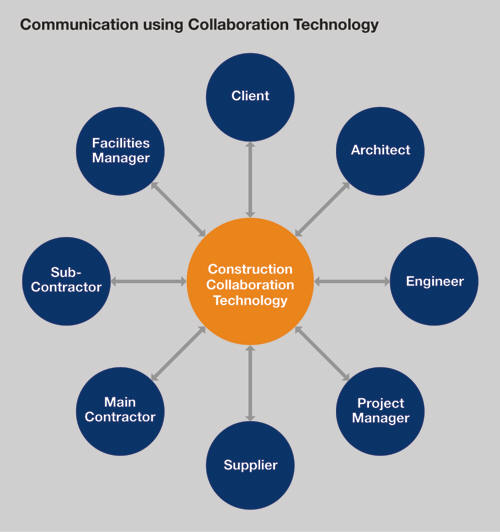Coordination Theory and Collaboration Technology
Workshops have also been sponsored by various outfits to study issues of technology and cooperative work. One of these workshops was organised by Jolene Gallagher at the University of Arizona. “These workshops focused on the behavioural science aspects of coordination and collaboration relating to the individuals, small groups and formal organizations and on computer based systems and software design for collaboration”.(Olson 2001)
(Olson 2001) asks a question about coordination theory in his book “How will the widespread use of information technology change the ways people work together?” Currently there is software out there that allows people to work continuously together. Such software has been referred to as groupware and computer supported co-operative work. Since the generation of computers and IT has boomed in the last 15 years, we now see large numbers of people who have acquired direct access to computers, primarily for individual tasks such as using spreadsheets and word processing. And this has given lots of opportunities for users to get together and use communication and computing capabilities to help co-ordinate their work.
(Olson 2001) quotes “specialized new software has been developed to support multiple authors working together on the same document, help people display and manipulate information more effectively in face to face meetings and help people intelligently route and process electronic messages. Other benefits that can occur from collaborative measures using technology refer to the future. New capabilities can allow for faster communication between users, less expensively and more selectively. Which in the long run for example can mean lowering costs of coordination between firms that may encourage more market transactions, more buying (Olson)
Communication
Collaborative Communication in interfirm relationships
Communication in firms and between firms is quite crucial in today’s competitive business world. (Jacky 1996) quotes “the most important element to successful interfirm exchange is communication; the most carefully designed relationship will crumble without goods, frequent communication. Described as the glue that holds together a channel of distribution” This shows communication as a vital on-going management of relationships.
“Collaborative communication relies on the development of cooperative attitudes and processes to guide and administer the relationship” (Jacky 1996) which creates an atmosphere of mutual support and respect. So by showcasing common goals and likeminded thinking, collaborative communication can create deliberate agreement between partners. Collaborative communication inside firms can also lead to different outcomes such as maintaining a positive relationship. This will make workers feel like they are a fundamental part of the team. Showing positive commitment to fellow workers can also strengthen trust bonds and give incentive for people to work harder producing improved coordination, satisfaction and commitment.
Below is an example of how parties within the construction industry would collaborate traditionally. Adding new technologies such as web-based collaboration will dramatically ease how information between parties’s can be accessed and saved. An example of what a web based system does: “The system manages information including drawings, documents and correspondence online. This enables all authorized parties, internal and external, to view, distribute and track their files electronically through one central system. (Aconex 2007)


Intent
An article called “Does measuring Intent Change Behaviour” had some interesting points attributed to the way we assess Intent. (Johnson 1993) quotes “Situational Influences and normative constraints are just two of the possible detours that prevent stated intentions from becoming reality”. Intent can be looked at in quite a few different ways. For example from a behaviour point of view, Influences can play a big role in determining the intentions of a person. However these influences can then be further affected by normative constraints such as rules or the law which in turn will affect the intent of a person. One person could be thinking, such as having an intention to do something but there behaviour can change because of these other influences or constraints. When assessing behavioural change when measuring intent this article mentions that answering a question can have two effects. (Johnson 1993) quotes "First, answering an attitude question from someone can make the attitudes much more accessible and make resulting behaviour more consistent with the underlying attitude. Second, answering an intention question not only increases attitude accessibility but can cause the respondant to engage in substantial cognitive work that may produce a subsequent change in attitudes and intentions". Basically what this means is that answering an intent question from someone could change your behaviour by making your attitude more accessible and by changing the attitude itself.
Context
The word "Context" is also used very repetitively and has quite a universal sort of meaning when you put it into content. One article called (International Journal of Ad Hoc and Ubiquitous Computing) talks about context-aware systems. In this area of the article the word context is referred to quite profoundly. "Context-aware systems offer entirely new opportunities for application developers and for end users by gathering context data", "Based on these design principles, we introduce various existing context-aware systems focusing on context-aware middleware and frameworks, which ease the development of context-aware applications"(Baldauf 2007, p.263). Basically they are referring to context as a term that implies that there system looks into many multitudes of different areas and can focus on them in more detail. So Context can be defined as a collaborative specific word that can entail terms such as arrangements, groups and teams.
References
- Olson, G 2001, Coordination theory and collaboration technology, Lawrence Erlbaum Associates
- Jacky, J 2001, Collaborative Communication in Interfirm Relationships, Journal of Marketing, vol 60, pp. 103-115
- Aconex 2007, Sydney Opera House: Information Control for the full asset lifecycle, solution web-based collaboration, accessed 13 May 2009, <http://www.automatedbuildings.com/news/dec07/articles/aconex/071129023808aconex.htm>
- Baldauf, M 2007, International Journal of Ad Hoc and Ubiquitous Computing, Volume 2, pp. 263 - 277, accessed 22 April 2009 from Inderscience Publishers Online
- Johnson E, 1993, ''Does measuring Intent Change Behaviour”, Vol. 20, pp. 46, accessed 22 April 2009 from JSTOR Archives
No comments:
Post a Comment